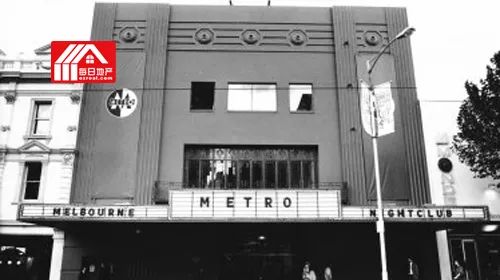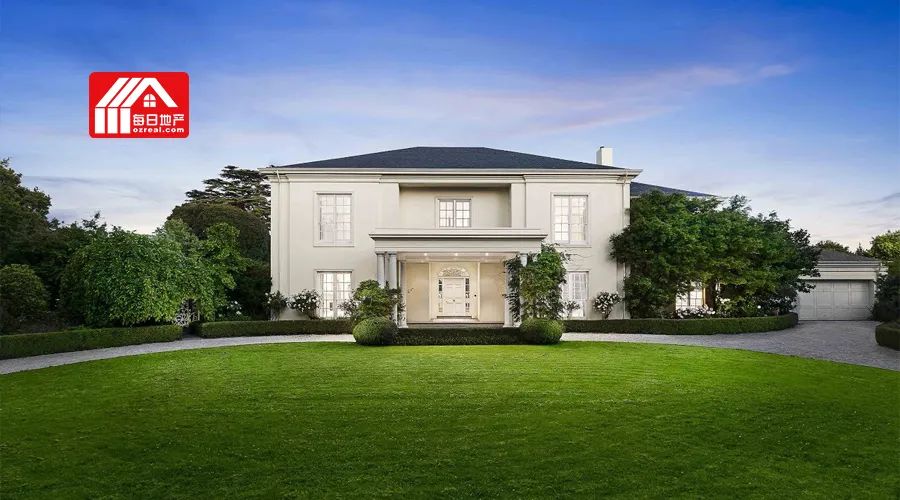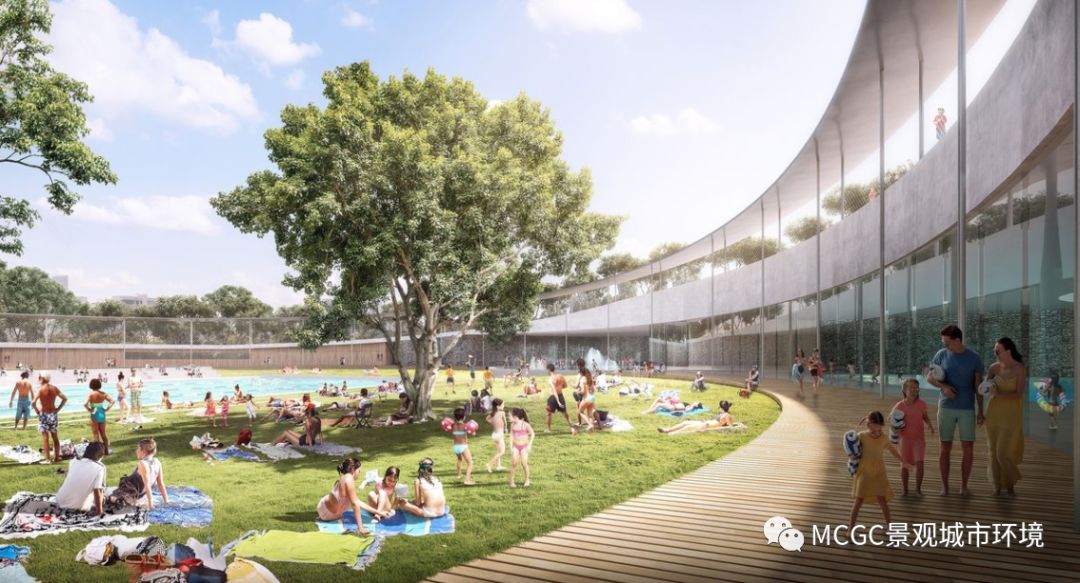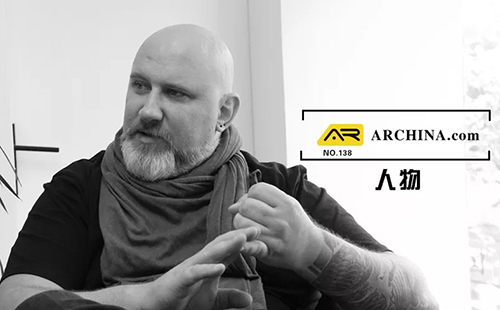
- 首 页 / HOME
- 关 于 / ABOUT
- 2025申奖 / ENTRY
- 获 奖 / AWARDS
- 活 动 / EVENTS
- 资 讯 / NEWS
- 合 作 / PARTNERS
澳派的作品总是精致、温馨、美好的,不仅体现在自然的重塑里,还体现在技术运用的恰到好处,柔和的色调总能唤起人们对生活的无限憧憬。无论是商业空间,还是住宅别墅项目,绿意盈盈、木质触感,空间的分割、材料的运用、技术的融合等等,都能从中获得惊奇和喜悦。
这家来自澳大利亚的公司在中国的土地上留下了许多值得人们驻足停留的绿色乐居景观,将澳洲的休闲与舒适注入了中国快节奏的城市生活中,打造了给予人们满足感和幸福感的都市高密度绿色空间。
澳派的创始人和董事Chris Razzell谈及高密度城市空间绿地缺乏的问题时,专注而充满关怀地说,“建筑和景观的共融形成了会呼吸的建筑物的概念。这个概念当前在澳大利亚越来越受到欢迎。建筑本身不再是我们平时所认为的建筑,而是景观与建筑形成的一个整体。在中国,许多令人称奇的开发项目也开始将这一概念植入设计中。”
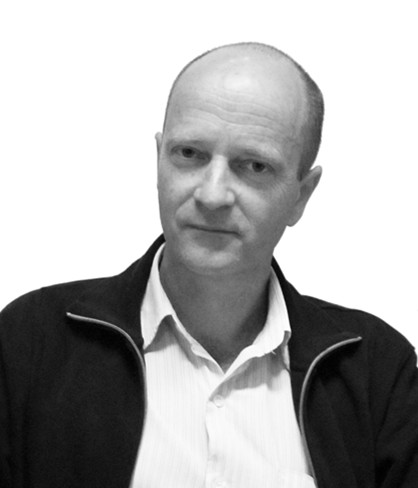
受访人:澳派(澳大利亚)景观规划设计工作室创始人和董事 Chris Razzell
时间:2014年3月21日
采访媒体:ARCHINA
记者/翻译:李雪松
ARCHINA:在您眼中,一个好的景观作品是什么样的?
Chris Razzell:就我而言,好的景观作品首先必须是对环境负责,同时还必须具备场所感和可持续性。由此出发,每一个好的景观和城市设计作品都有责任营造出一个对使用者有意义的空间。这样的作品还必须具有经济效益,不仅体现在对业主预算的负责,还体现在积极的影响力上。
设计施工预算的高低都应该尊重业主的想法。设计师所营造的场地必须是人们愿意前往并感到舒适的地方,并且从多个层面能吸引不同年龄段的人群。
总而言之,好的景观作品是能引起使用者共鸣,能产生积极的环境效益,能为社区居民带来良好的社会关怀。
ARCHINA:澳派致力于可持续发展的设计,不仅关注使用者的体验,还关注整个社会、经济和生态的效益,可以结合一个或者几个项目详细介绍下这方面么?
Chris Razzell:澳派有两个项目广为人知,一个是悉尼达令港城市广场,另一个是杰克伊万斯船港码头,后者位于澳大利亚威尔士东部和昆士兰接壤之处。
达令港城市广场是关于场所营造的。设计师和业主共同构思出独特的设计方案,将业主的资金真正落实到政府的土地上,将项目的效益释放出来。在各方达成一致后,我们作为设计方就着手制定今后将要遵循的流程,并尽力营造一个有利于整个项目发展的空间。项目不仅具有场所吸引力、城市独特性,同时在提升人们的经验和价值方面具有积极影响。在开发商、租赁者、城市居民的眼中,这些都十分重要。项目采用了独特的设计手法,我们所有的工作都是建立在与业主紧密合作的基础之上。因此,我们借鉴了博物馆策展的构想。如何去展示景观?这样的景观要吸引到大多数人。
目前,我们正着手在中国南方进行一个类似的项目,在尺度上是达令港城市广场的2.5倍。我们会把悉尼的设计构思注入这个中国项目里。澳派的作品是真正与社会价值、环境价值相关联的。如何能与众不同呢?在项目的进展中,如何与业主紧密合作呢?答案是我们有着共同的目标。
杰克伊万斯船港码头在过去的二十年里由于资金缺乏导致基础设施破旧不堪。我们与当地市政府以及业主共同合作完成了这个项目。宗旨是重新诠释场地历史,并将项目作为复兴经济的催化剂。这个滨海空间已经成为人们愿意前往并乐在其中的目的地。配套设施满足了人们的需求,同时也解决了滨海发展的问题。我们是顾问团队,职责在于处理所有的问题,包括技术、经济、交通、排水等基础设施问题。例如,将导入海港的暴雨雨水做处理,对水质进行提升,由此得以确保人们在其间游泳。
依靠一个顾问团队是无法完成达令港城市广场和杰克伊万斯船港码头这两个项目的。我们是总顾问,和业主有着共同的愿景。我们一起带领同一个团队来完成项目,实现我们先前为业主建立的愿景。
ARCHINA:创意是澳派项目的又一个亮点,澳派团队是如何将创意和技术相结合并体现在设计中的?
Chris Razzell:这个问题很有意思。大部分的业主都会被我们对项目的构思所吸引。业主总是带着一系列问题来找我们做项目,这极富挑战性,我们总能够给予有效的价值或者有创意的处理手法。如何处理这些难题,包括解决技术层面的问题,并将其变为机遇和优势?一部分原因在于我们有着很好的团队,能够从多方面思考。人们通常能够想到的解决方案并不是最好的。这就涉及接纳各种思想,同时对照我们之前所建立的标准进行测试,最后得出最好的答案。在这个过程中,最重要的是以科学的态度以及物理三维的思想对待测试,包括模型制作,即对待问题的态度都要基于空间体验。
大部分的工作都涉及场地历史,我们试图讲述一个人们乐于前往的场地故事。当然还涉及技术。我们所运用的大部分技术都是无源的。换言之,就是寻求无源的低成本解决手法,特别在环境方面,几乎替代了有源技术。与志同道合的人合作,如测试方案的工程师。项目团队所做的工作就是突破标准预期的限制,拓展工程维度,结合能引起人们共鸣的创意元素,比如营造出符合我们及合作者需求的超轻型结构,同时超出标准预期。
ARCHINA:澳派团队在企业社会责任方面十分活跃,据我们所知,包括院校教学和演讲、义务为慈善机构和社区提供景观服务、将各个工作室差旅的碳排放量折算后捐助给环境慈善机构等,可否详细谈谈这方面?
Chris Razzell:社会责任是每个公司都面临的问题,这与企业的大小无关。个体以及主导企业发展的人等都有责任尽力为环境出一份力,包括帮助那些弱势群体或者没有获得相同机遇的人们。澳派在这方面十分活跃,从总监到资深雇员都会到澳大利亚和中国的大学做免费的演讲。这是为年轻学生提供教育资源所做的承诺。我们也做了许多慈善工作。目前,我们悉尼的总监正在进行一项为澳大利亚底层儿童捐款的慈善工作。所有雇员都参与了。作为小型公司,我们捐款的数额在4000澳元左右。
我们要对环境负责,因为我们都是消费者,我们消费咖啡、电力等。澳派抵消了其在澳大利亚和中国所产生的所有碳排放,包括出租车、火车、飞机等能耗。我们将其捐给澳大利亚政府。此外,我们还以种树的方式来抵消碳排放。我们从事这项工作已经五年了。这是一种理念,与金钱无关。作为一个公司,我们可能会创造很好的作品,同时,我们也希望有一个很好的居住环境,包括洁净的空气和清澈的水。
我们和各种组织共同合作开展了许多公益项目,例如,非洲乡村建设项目,也为澳大利亚土著社区、非洲社会底层社区等工作。首先,我们在当地寻找到那些需要帮助的人,然后通过各种途径给予他们帮助。那些没法接受专业知识的人会得到我们给予的技能提升课程。公益工作有时是需要亲自动手的,我们的员工甚至自己种树。有时,我们要解决许多问题,比如水处理、防风问题等。有时,如果是一个简单的方案,我们会亲自参与实施。在不同的区域,我们尽己所能做出改变。
作为在中国投资的外商,我们能寻找到贫困的乡村以及有着积极影响力的景观设计公益机构,却无法寻找到适合的公益项目。公益对我们而言大部分在澳大利亚,我们希望未来能为整个国际环境做出更多的贡献,那些组织机构能够得到我们的帮助。这是每个企业成功运转后必须回馈社会的责任。
ARCHINA:澳派的创新不仅体现在设计里,还体现在各项最新研究和技术里,能详细介绍下么?
Chris Razzell:澳派有一个叫Folio的组织架构,为雇员的职业规划提供帮助,激励他们延伸兴趣爱好,让公司更加团结。例如,那些对绿色屋顶、环境系统、无源技术等绿色基础设施方面感兴趣的人聚到一起共享信息、知识、培训项目等,同时将这些信息保存在公司里,进而帮助其他同事提升技能。
Folio小组像是集合了我们所做的一切,比如景观设计、艺术、城市规划、绿色基础设施、市场营销、商务拓展等,涵盖了澳派整个营业范围以及与志同道合的人的合作。我们鼓励雇员在提升各自的认知体系的同时还能帮助公司其他同事获取知识。公司的每个雇员都是Folio小组的成员。我们能很精准地知道每个人的兴趣所在,公司能够针对不同的人定制专属的技能提升计划,比如适合参加何种类型的专业或项目,哪所大学能够为他们提供适合的课程。
虽然人不能掌握所有的知识,但是团队里每个人都掌握一两门专业知识,在你需要答案的时候,就知道去找谁。例如,我需要了解绿色屋顶的热值反应,我就知道去哪儿找懂这个的人,无论他是在阿德莱德、墨尔本、悉尼,还是在上海。我能在24小时内就找到他并得到答案。这是一个技能的集合,同时在雇员间推动职业的可持续发展。
ARCHINA:如何在现在非常高密度、缺乏绿色公共空间的城市里营造给予人们幸福感的空间呢?
Chris Razzell:这涉及一系列问题,其中一项是城市公共空间的稀缺。上海这样的城市正在解决这样的问题,以后会有所改变,这令人感到欢欣鼓舞并充满期待。当前,人们正在关注绿色空间、区级公园的概念。上海拥有很棒的区级公园,街区公园十分稀缺,虽然有许多社区公园,却还是不够的。
在目标确定后,从景观设计师到开发商到政府,所有的人都在寻找机会。例如,如何将绿色注入开发项目里?如何设计屋顶?屋顶能被赋予许多元素,包括休闲、教育、减缓城市热岛效应、提升暴雨雨水径流的水质等。当你站在屋顶的时候,你会思考怎样才能将更多的绿色带进我们所处的环境里。许多研究表明我们周边的绿色元素越多,我们会感觉更舒适,工作也会更出色。这是我们所面临的问题。
在垂直绿化方面,开发商、景观设计师、建筑师、工程师怎样才能给予我们所处的建筑物足够的绿化呢?建筑和景观的共融形成了会呼吸的建筑物的概念。这个概念在当前的澳大利亚越来越受到欢迎。建筑本身不再是我们平时所认为的建筑,而是景观与建筑形成的一个整体。在中国,许多令人称奇的开发项目也开始将这一概念植入设计中。绿色屋顶、垂直绿墙衍生出许多新问题,建筑和景观融合为一体,这对城市居民的休闲需求十分重要,也是基本的考量因素。
我们在悉尼的一个项目——悉尼中心豪华公寓,建筑和景观相融合,对环境产生了积极的影响,为居民和开发商都带来了益处。开发商想挣更多钱,居民也乐意付出更多的成本在那儿居住,因为呆在那儿感觉很舒适。这种感觉就像居住在30层的人每天早上醒来能够看到窗台的景观,仿佛是生活在大自然一样。因为机遇,特别是教育和求职,城市环境吸引着人们。在中国,人们都涌向城市,开发商面临这一机遇十分主动并努力寻求解决方法。这将带来一个新型的开发模式。
我们会给人们带来满足感和幸福感,这是我们正在应对的挑战。虽然现在还处在早期阶段,未来将会出现许多令人称奇的项目,包括建筑、景观及其他的设计。绿色元素将融合进这些项目里。高密度的城市环境里,绿地稀缺,通过建筑和景观相融合可以得到补偿。人们能在绿色环境里生活、工作、娱乐,从中获得幸福感、舒适感以及社交需求,同时为社区和政府节约大笔费用。当今社会面临的教育、健康等诸多问题在一定程度上都能通过建筑和景观一体化来解决,并非只是停留在表面功夫而已。
我们谈及的幸福感是指人们乐居于有鸟儿、树木、蝈蝈的城市环境里。景观设计师和建筑师都在极力营造一个不同的环境,孩子、父母、祖父母等都能在其中感到幸福。
【Chris Razzell个人简介】
董事/澳大利亚景观设计师协会注册景观设计师/澳大利亚皇家墨尔本理工大学 景观学士/澳大利亚皇家墨尔本理工大学学术指导委员会成员/中国可持续生态发展论坛演讲人/中国绿色建筑协会会员/指导计划/澳大利亚景观设计师协会维多利亚州成员
Chris于1993年创立了澳派,是澳派(澳大利亚)景观规划设计工作室的创始人和董事。他带领整个设计团队进行设计创作,并成功创立了墨尔本、悉尼、上海以及多媒体设计工作室,提供专业一流的景观设计与多媒体设计咨询服务。
Chris致力于为景观设计和城市设计项目打造最高品质设计成果。Chris在大型城市设计、住宅与商业景观设计上有着独特的创意、娴熟的专业技能和丰富的工作经验。Chris投入到公司团队建设,设计工作,财务管理,综合战略发展等各项工作,激发澳派团队的潜力,领导澳派的发展。
Chris认为整个工作室的发展有赖于各个工作室的专长与设计资源的分享。通过多年的设计经验,澳派形成了一个设计资源分享的平台,能有效地进行设计知识技能的分析、工作室与工作室之间的合作、人员的培训等。在公司成立的17年中,澳派获得了多个设计奖项,不断地为我们的客户提供咨询服务。
2005年,Chris开始拓展海外市场,并于2006年在中国创立了澳派的工作室。Chris现在常驻中国上海工作室,作为工作室的主创设计,带领整个设计团队,提供大型的城市设计、现代地标的商业景观设计与住宅设计和生态设计服务。
【英文原稿】
ARCHINA: In your opinion, what is a good landscape work?
Chris Razzell: From my perspective, good landscape work firstly must be responsible to the environment, and must be underpinned by sense of place and sustainability. All good landscape and urban design work have responsibility to create places that have meaning to people who again lived there. I also think economically, they must have some impacts, must be responsible to the client’s budget, and must be responded in a positive way.
In respective with the client, design construction budget is high or low. Places that we design are places where people want to go. People must be comfortable in those places. They must be places that attractive in a broad sense to people of all ages in many respects.
A good landscape work in summary must be responsive. It must contribute positively to the environment and to the social wellbeing in a fabric community.
ARCHINA: ASPECT Studios strives for sustainable design and gives the attention to users’ experience, the whole society, economic and ecological benefit. Can you talk ab0ut it in detail with one or several projects?
Chris Razzell: I think probably two are well-known projects. Certainly, one is Darling Quarter in Australia. The other one is Jack Evans Boat Harbor on the border between Eastern New South Wales and Queensland.
Darling Quarter is really ab0ut place-making. It quietly ties unique approach conceived by both of us and client together to actually invest our client’s money on the government land for the benefit of the project. Of course, once those parties have agreed to that. We set ab0ut some processes we abide by and we try to create a space which is good for the entire development. So something is attractive for that site. Something is unique to the city. And something provides positive uplift in experience and also values. And that is valued for the developer, the tenant, and the wide residents of the city. That project took a very unique approach. All of our work in that project is design underpinned and developing collaboration very closely with land list. Therefore, we took this idea of curation like you work in a museum. How can you curate a landscape? It is attractive to many people.
We are currently working on a similar project in South China which is actually two and half times the size of Darling Quarter. This project will bring the same values we have in Sydney into our work in China. In our part of work, it is really ab0ut social value, the environmental value that associated with that project. And how can we make a difference? How can we do it by working closely with the client? We share the same ambition to do it.
Jack Evans Boat Harbor is a project for many years which had suffered through lack of investment from the city. Inappropriate infrastructure over the former twenty years has simply become very degraded. So we partnered with local city government on that project to our client, their landscape design department and lead consultant. Our role is reinterpreting the site history but utilizing the project as catalyst for economic revitalization. It creates a foreshore environment and becomes a destination that people want to go to and enjoy being in. It provides facilities that responsive to people’s needs, and at the same time, addressing coastal development. It also has all range of issues to deal with. For example, treatment to stormwater into the harbor, improve the quality of that, so we can assure water quality to the people swimming. We symbolize the team of consultants to deal with all of the technical issues, economic issues, traffic issues and infrastructure issues like drainage.
Both Darling Quarter and Jack Evans Boat Harbor can not be completed by one consultant line. So we are the lead consultant. We share a vision with our client. And we’ve charged the same team to deliver the project, to make the vision we established earlier to our client.
ARCHINA: Creativity is another highlight of ASPECT Studios. We wonder how do you integrate the creativity and technology into design?
Chris Razzell: This is a very interesting question. Most of our clients are actually engaged because of what we think. Why we think and how we think ab0ut the project. Our client will come to us with project and have a lot of problems. It’s very challenging. How can we change something from a problem into an opportunity? How can you take difficult and technically demanding situations and turn them into an advantage? Partly because we have the right people in a team and that’s ab0ut how people think laterally. The most recognizing, the most obvious solution may not be the best one. It’s ab0ut taking a lot of ideas, testing those ideas against the criteria we established and working on to achieve. During that process, the serious solution is test those in a scientific sense and in a physical 3 dimension sense, producing models, everything looking at them from a special experience.
Most of our work is engaged with the history of the site and we try to tell a story ab0ut where that site and its people are willing to go, also engaged with technology. Most of the technologies we engaged are called passive. In another way, looking for passive low cost solution, particularly on the environment front, almost superseding more active types of technology, working with similar like-minded people, and engineers who test the boundaries. Everything we do with our project team is ab0ut pushing the limits of normal expectation, stretching engineering, tying responsive into something creative. How can we create a very light weight structure that we need and the people who are working with us to go beyond just the normal response.
ARCHINA: ASPECT Studios is active in CSR field, including teaching and giving speech in various universities and colleges, providing free landscape service for charity institutions and communities, donating conversion fees of studio travel carbon emission to environmental charity group, etc. Can you please talk ab0ut it in detail?
Chris Razzell: It’s a question for every company ab0ut social responsibility. It doesn’t matter whether you are big or whether you are small. Fundamentally, I think all of us as individuals and people who control the direction of company have responsibility to do as much as we can for the environment or those people who are disadvantaged or people who don’t have the same opportunities that we mind. ASPECT Studios has a company policy to be very active in this area. All of our directors and senior staff lecture for free at universities in Australia and China. That commitment is providing educational resource to younger students. We also do a lot of charity work. At the moment, our directors from Sydney are conducting a wide range of charity. That’s donations from our staff for that cause. That is charity for underprivileged children in Australia. We are small company, and we would probably donate around 4000 dollars.
We have responsibility to our environment. We are all consumers. We consume coffee, electricity, etc. ASPECT Studios has offset all of its carbon emissions. That’s not just those carbon emissions generated in Australia, we also calculate our carbon footprint in China. The taxi ride we take, the trains, the planes, and the power. And we provide that to Australian government. Also the work in terms of the planting of trees they need to do to offset all of our carbon emissions produced in Australia and China. We do that as our part of work for five years now. It’s not ab0ut the money. It’s ab0ut the idea. It’s ab0ut as a company, if we create hopefully great work, we still want a great environment to live in, and we want clean air and clean water.
We’ve done pro bono work for a number of organizations. One of those is a village construction in Africa. We have done pro bono work for aboriginal communities in Australia and disadvantaged communities in Africa. Sometimes, these people just can’t get the access to the top of skills, they can’t afford these to the type of professionals, and I need to improvement to their lives in a city or a town. We look for these groups and actually give help. Some staff of us even go there and plant trees. So it’s quite hands-on. At the same time, you could help something professionally. There’s a problem here like water management, wind breaking. This is a very simple plan; we will go and work with them. Sometimes, we even help implement it. We want to make a difference as much as we can in many different areas.
For us, as a company, we are investor in China. We really can’t look the right pro bono work that we can do. We can find disadvantaged villages. Some charity organization with the landscape design could have positive influence. Pro bono for us is in Australia, we hope the future will become growing contribution we can make back to the company right in. The organization can benefit by our helping. It’s an obligation of all successful companies to provide something back.
ARCHINA: Innovation of ASPECT Studios embodies not only in design, but also in the up-to-date research and technology. Can you please talk ab0ut it in detail?
Chris Razzell: The way we structure part of our operations is what we called Folio groups. Folio group is for us nearly expertise. We try to as part of our career planning for our staff. Fosters specific areas with their interesting but also make the company adjective. For example, those people who are very interesting in green infrastructure like green roofs, environmental systems, and passive technologies group together share information, knowledge, training programs, and that information they gather, is retained on our service in a library. And they disseminate that information out to other staff. They help up skill other staff in key areas of knowledge.
The Folio group is for us part of pretty much everything we do, from landscape design, art, urban planning, green infrastructure, marketing, business development. So it covers whole range of our business scope and also collaboration with like-minded people. It’s really a form we have tried to promote great knowledge to individuals, to interest in key areas and disseminate that out to the rest of the studios. Everybody of our studios is involved to some degree in the Folio structure. We know exactly what their interests are and that helps us tailor their skill development. What expert or program they are going to? What university can provide a course they might attend to learn more?
Everyone can’t be expert on everything. But you have people in your organization who expert one or two things, and if I need an answer, I know who to go to. For example, if I need an answer on thermal value performance of the green roof, I know where the person is whether on Adelaide, Melbourne, Sydney or Shanghai, I can contact them and have the answer I need within 24 hours. It’s ab0ut having a broad range of skills and then fostering the idea of continuing professional development education in all of our staff from directors to junior staff.
ARCHINA: Today’s city is full of high density public space lacking green element. How to create a space in such city that gives people the feeling of happiness?
Chris Razzell: There are a couple of questions. One of them is public space in cities is lacking. I know some cities like Shanghai are addressing that. More is happening. That’s fantastic to see. But I think part of what people are looking at today is taking the idea of green space or a regional or sub-regional or District Park and looking for other opportunities. Shanghai has got very good regional parks. Sub-district parks are lacking. And there are a lot neighborhood parks, but not enough.
When goals are being plugged, everybody from landscape architects to developers and to governments is looking at other opportunities. How can you bring green to development? What can you do with the rooftops? Rooftops have a lot benefits in terms of opportunities for recreation, education, reducing the surfing of the urban heat island effects, improving quality of stormwater runoff, and whole range of opportunities. And when you are being in a rooftop, you could think of how you can bring more green to our environment. Because there are many studies quantify that the greener we have around us, the better we feel, the better we work. That’s the problem we have.
You could start to look at vertical greening. How can developers and landscape architects work with architects, engineers to bring enough part of the greening into our buildings? We start to blend the idea of what is architecture and what is landscape. And what we are seeing more and more certainly in Australia at the moment is the idea of what we call the living building challenge where the building itself is no longer what we really call just the building. The building and the landscape are merged together and become one entity. I think you already start to see interest here in China with some quite amazing development starting to take on this idea within them all.
If you look at our project One Central Park in Sydney, this is a revolution of blending landscape into architecture together where the two is working together and functioning together, provide positive benefit to the residents, the environment, and also to the developer. Developers need more money. People will happily pay more to live there because it feels better. It’s nothing like waking up in the morning on level 30 looking at landscape in your window, just like nature. Fundamentally, we’re all attractive to the urban environment because of opportunities, particularly employment, education. In China there is a huge move to the urban environment. These sources of opportunities now for developers are really proactive and they are looking for ways how we can chase this in China.
We would bring a lot more satisfaction for people and a lot more happiness to their everyday life. This is the challenge we are looking forward to taking on. It is still very early. The future to architects and landscape architects and designers is going to be full of amazing projects. The urban environment is very dense, there is not enough green space, but there are ways for compensating that. And those ways can be realized by creating buildings and landscape systems that work together. That will satisfy people more generally in a sense of the feeling of wellbeing, the social abilities. If you could live, work and play in a green environment, the cost saving to the community and the government is enormous. A course of whole range of areas from education, health, all of these problems we see in our society today can be partly relieved by better development that combines landscape with architecture in a very integrated way not a surface or skin.
We talked ab0ut happiness. Everybody feels better by living in green where there are birds and trees, where they can see grasshopper in the city. These are environment professional landscape architects and architects are trying to source and to make a difference to the future, to the children, for mothers or fathers or grandmothers or grandfathers that we feel better.
[Profile of Chris Razzell]
Director
Registered Landscape Architect, AILA
Bachelor of Landscape Architecture RMIT (1987)
Former Academic Advisory Council, RMIT
China Sustainable Design Forum Guest Speaker
Member China Green Building Council
Mentoring Program
AILA VIC Member
Chris established ASPECT Studios in 1993 and is the founder and corporate Director of ASPECT Studios. He has maintained the overall direction and growth of the studios since its formation in 1993, guiding the successful development of the studios from Melbourne into Sydney and then Shanghai as well as its core R&D digital arm, pioneering advanced virtually reality design services.
Chris is driven by a commitment to deliver the highest quality design outcomes across the breadth of landscape architecture and urban design. His expertise lies in large scale urban and commercial development and delivering innovative and sustainable solutions to these. Chris’ inventive, disciplined skills and integrated involvement are brought to bear on anything from team management, the design business, financial, logistical or strategic issues, to fostering the potential of all ASPECT Studios’ staff.
Chris’s business philosophy is founded on the principle of studio individuality supported by a national and international network of expertise and collaborators. The long term development of the studio has evolved on a platform of shared knowledge, inter-studio project delivery and a commitment to fostering continued education among ASPECT’s professional staff. Chris’s focus over the last 17 years has been to deliver award winning projects which the practice has continued to deliver.
In 2005 Chris commenced building the practices portfolio overseas and in 2006 he established ASPECT’s studio in China and now spends three quarters of his time in China based in the Shanghai Studio. From Shanghai he is primarily involved in guiding and delivering large scale city planning and contemporary commercial and residential projects that have a strong sustainable basis.
